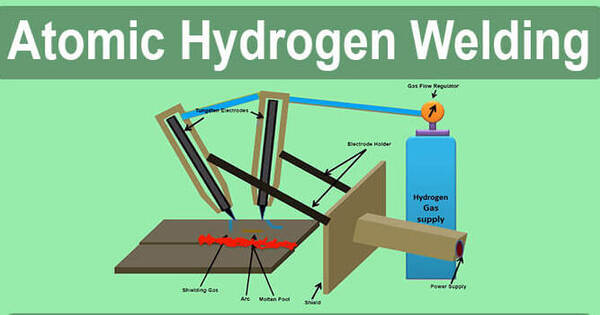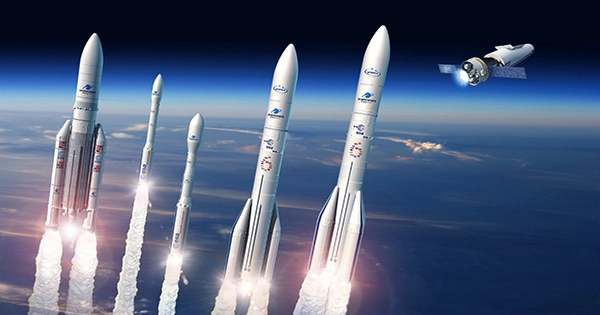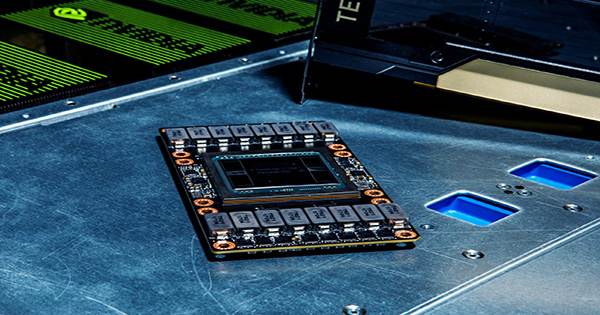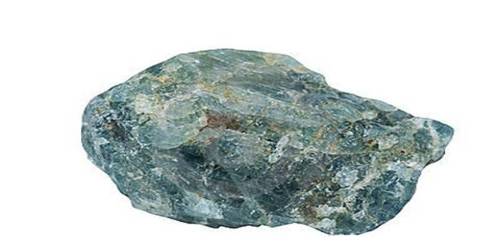Atomic hydrogen welding (AHW) is a welding technology invented in the early twentieth century, primarily for combining metals such as aluminum and magnesium. It is an arc welding procedure that involves creating an arc between two tungsten electrodes in a hydrogen-shielding atmosphere. It is an earlier welding technique that has been mostly supplanted by more current technologies like gas metal arc welding (GMAW) and tungsten inert gas (TIG) welding.
Irving Langmuir devised the method while studying atomic hydrogen. The electric arc efficiently breaks up the hydrogen molecules, which then recombine with a massive discharge of heat, reaching temperatures ranging from 3400 to 4000 °C. Without the arc, an oxyhydrogen torch can only reach 2800 degrees Celsius. This is the third-hottest flame after dicyanoacetylene at 4987 °C and cyanogen at 4525 °C.
An acetylene torch only reaches 3300 °C. This apparatus may be referred to as an atomic hydrogen torch, nascent hydrogen torch, or Langmuir torch. The procedure was sometimes referred to as arc-atom welding. This torch produces enough heat to weld the most refractory metal, tungsten (3422 °C). The presence of hydrogen also works as a shielding gas, preventing oxidation and contamination by carbon, nitrogen or oxygen, which can severely impair the characteristics of many metals. It eliminates the requirement for flux for this application.
Here’s how atomic hydrogen welding typically works:
- Setup: The procedure employs a torch and two tungsten electrodes. The tungsten electrodes are mounted in a torch handle and surrounded by a nozzle through which hydrogen gas passes. The workpieces being welded are clamped together.
- Hydrogen Gas: High-purity hydrogen gas is used as both a shielding gas and a fuel during the welding process. The hydrogen gas is fed through the torch and heated to extremely high temperatures using an electric arc between the tungsten electrodes. This arc warms the hydrogen gas to its atomic state, separating it into individual hydrogen atoms.
- Welding: The atomic hydrogen gas, in its highly reactive state, is directed onto the workpieces to be welded. The extreme heat of the atomic hydrogen gas causes the surfaces of the workpieces to become molten. As the hydrogen gas is directed onto the molten metal, it reacts with any oxides present on the surface, removing them and ensuring a clean weld.
- Joining: Once the surfaces are sufficiently heated and cleaned, the workpieces are brought together, and the molten metal from each piece fuses together, forming a strong weld joint.
- Shielding: The hydrogen gas also serves as a shielding gas, protecting the molten metal from atmospheric contamination during the welding process.
AHW has some advantages and disadvantages:
Advantages:
- High welding speeds can be achieved.
- It can weld thick sections of metal effectively.
- The welds produced are of high quality and strength.
- It can weld reactive metals like titanium and zirconium.
Disadvantages:
- It requires high-purity hydrogen gas, which can be expensive.
- The equipment setup is complex and can be costly.
- Safety concerns due to the highly reactive nature of atomic hydrogen gas.
- Limited applicability compared to more modern welding methods.
Overall, while atomic hydrogen welding has been used historically for certain applications, its usage has declined over time due to advancements in welding technology and the availability of more efficient and versatile welding processes.
















